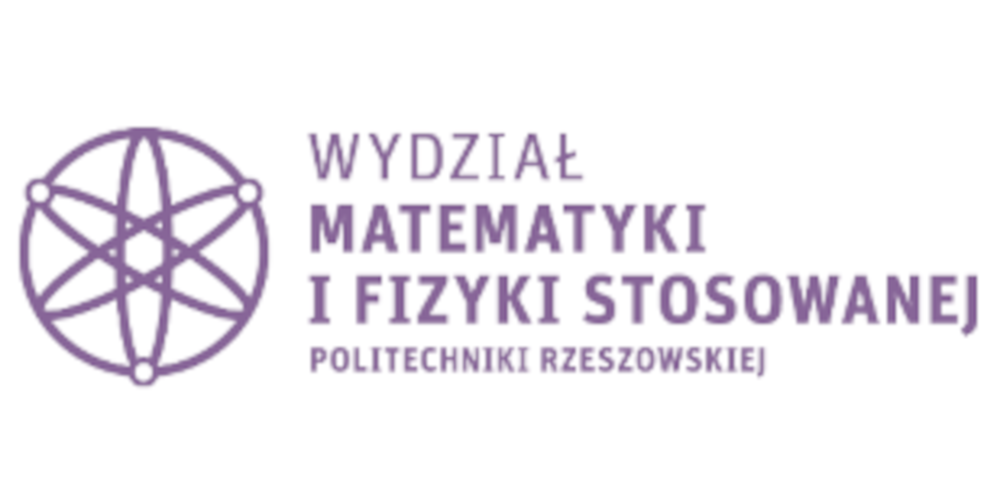

Linear Programming
Some basic information about the module
The aim of studying and bibliography
The main aim of study:
Preparing students to use linear programming algorithms and techniques to solve optimization problems
The general information about the module:
The module is implemented in the fourth semester (15 hours of lectures, 30 hours of laboratory classes and 15 hours of project classes)
Bibliography required to complete the module
| 1 | J. G. Ecker, M. Kupferschmid | Introduction to Operations Research | John Wiley & Sons, New York. | 1988 |
| 2 | W. Sikora (red.) | Badania operacyjne | PWE, Warszawa. | 2008 |
| 1 | T. Szapiro | Decyzje menedżerskie z Excelem | PWE, Warszawa. | 2000 |
| 2 | K. Masłowski | Excel 2016 PL. Ćwiczenia praktyczne | Helion, Gliwice. | 2016 |
| 1 | K. Kukuła (red.) | Badania operacyjne w przykładach i zadaniach | PWN, Warszawa. | 2016 |
| 2 | D. Rogalska | Programowanie liniowe: algorytmy i zadania | Wydawnictwo Uniwersytetu Łódzkiego, Łódź. | 1998 |
Basic requirements in category knowledge/skills/social competences
Formal requirements:
The fourth semester of a degree in engineering and data analysis. The student satisfies the formal requirements set out in the study regulations.
Basic requirements in category knowledge:
Basic concepts of linear algebra and analytic geometry: matrices, determinants, systems of linear equations, vectors, vector and affine spaces
Basic requirements in category skills:
Student knows operations on matrices and vectors, can solve systems of linear equations, has a basic practical knowledge of using the MS Excel spreadsheet
Basic requirements in category social competences:
Willingness to continue to acquire mathematical knowledge. Ability to work in a group
Module outcomes
| MEK | The student who completed the module | Types of classes / teaching methods leading to achieving a given outcome of teaching | Methods of verifying every mentioned outcome of teaching | Relationships with KEK | Relationships with PRK |
|---|---|---|---|---|---|
| MEK01 | understands the basic concepts of linear programming, knows how to solve a simple problem of linear programming using the graphical method and duality | lectures, laboratory and project classes | written exam, project evaluation |
K-W03++ K-U03++ K-K01+ K-K02+ |
P6S-KK P6S-KO P6S-UW P6S-WG |
| MEK02 | knows the symplex method, can set the initial basic feasible solution and find the optimal solution (unique or multiple) | lectures, laboratory and project classes | written exam, project evaluation |
K-W03++ K-U03++ K-K01+ K-K02+ |
P6S-KK P6S-KO P6S-UW P6S-WG |
| MEK03 | identifies the transportation problem, knows how to determine the initial solution; solves the unbalanced transportation problem, recognizes the assignment problem and knows how to apply the Hungarian algorithm | lectures, laboratory and project classes | written exam, project evaluation |
K-W03++ K-U03++ K-K01+ K-K02+ |
P6S-KK P6S-KO P6S-UW P6S-WG |
| MEK04 | uses the MS Excel Solver package for modeling, solving and post-optimization analysis of linear programming problems | laboratory and project classes | project evaluation |
K-W03++ K-U03+++ K-K01+ K-K02+ |
P6S-KK P6S-KO P6S-UW P6S-WG |
The syllabus of the module
| Sem. | TK | The content | realized in | MEK |
|---|---|---|---|---|
| 4 | TK01 | W1-W5, L1-L10 | MEK01 MEK04 | |
| 4 | TK02 | W6-W10, L11-L20 | MEK02 MEK04 | |
| 4 | TK03 | W11-W15 , L21-L30 | MEK03 MEK04 | |
| 4 | TK04 | L1-L30, P1-P10 | MEK01 MEK02 MEK03 MEK04 | |
| 4 | TK05 | P11-P15 | MEK04 |
The student's effort
| The type of classes | The work before classes | The participation in classes | The work after classes |
|---|---|---|---|
| Lecture (sem. 4) | contact hours:
15.00 hours/sem. |
Studying the recommended bibliography:
7.00 hours/sem. |
|
| Laboratory (sem. 4) | The preparation for a Laboratory:
5.00 hours/sem. |
contact hours:
30.00 hours/sem. |
Finishing/Making the report:
10.00 hours/sem. |
| Project/Seminar (sem. 4) | The preparation for projects/seminars:
5.00 hours/sem. |
contact hours:
15.00 hours/sem.. |
Doing the project/report/ Keeping records:
10.00 hours/sem. The preparation for the presentation: 2.00 hours/sem. |
| Advice (sem. 4) | The participation in Advice:
1.00 hours/sem. |
||
| Exam (sem. 4) | The preparation for an Exam:
8.00 hours/sem. |
The written exam:
2.00 hours/sem. |
The way of giving the component module grades and the final grade
| The type of classes | The way of giving the final grade |
|---|---|
| Lecture | The final grade of the lectures is a written exam mark |
| Laboratory | At least 3,0 mark for each project - the final grade is their arithmetic mean |
| Project/Seminar | Mark 3,0 for 70% of possible points. Mark 4,0 for 80% of possible points. Mark 5,0 for 90% of possible points |
| The final grade |
Sample problems
Required during the exam/when receiving the credit
(-)
Realized during classes/laboratories/projects
(-)
Others
(-)
Can a student use any teaching aids during the exam/when receiving the credit : no